Laokoongruppe
Graben, Hofburg, 2009
It’s been almost two years since we have got in touch with Laokoongruppe, trying to arrange a video shoot. In fact, the project’s mastermind Karl was among the first people we had in mind for a session when They Shoot Music Don’t They started in late 2007. From that time on there were ideas floating around now and then, but somehow it never happened. Laokoongruppe is a one-man-band using a lot of electronics and samples, thus the translation into an acoustic setting seemed kind of tricky. In summer this year, however, Karl calls us to set a date for a busking tour through central Vienna. He is preparing a Single-DVD release of the song “Komm Und Tanz Mit Mir” from his recent album “Walzerkönig”, featuring the official video done by the fabulous video artist Adnan Popovic (check here (https://www.youtube.com/watch?v=79XI9tv9HW8)) and a street-style acoustic version filmed by us. On a late-September day we gather with Karl and his band (Oliver Stotz and Das Trojanische Pferd (https://www.myspace.com/dastrojanischepferd)) in a café, sort out details, do some warm up takes and then start into a six-hour tour through the heart of Vienna, past all the landmarks such as Parliament, Burgtheater, the Town Hall, Graben and Hofburg. The video of “Komm Und Tanz Mit Mir” – featuring a bridal couple with family and friends, who join in dancing and singing and finally serve some liquor – is only available on the DVD. But there is some more stuff definitely worth sharing: Down below you find takes of “Wir Haben Euch Lieb” and “Nein Wir Reflektieren Nicht” from the extended session.
- Photography
- Simon Brugner
- Artist
- Laokoongruppe
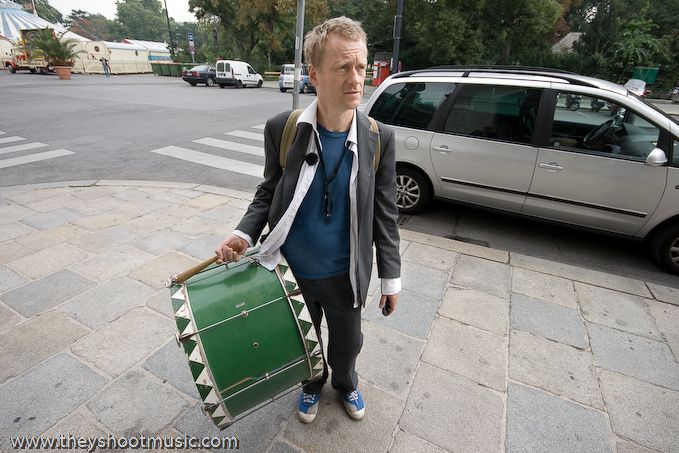
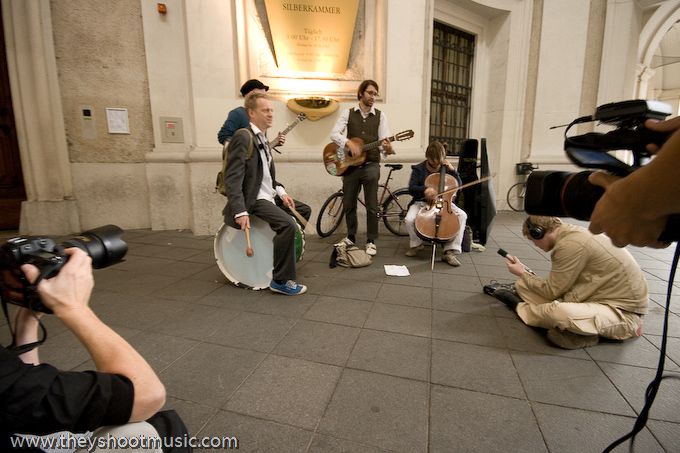
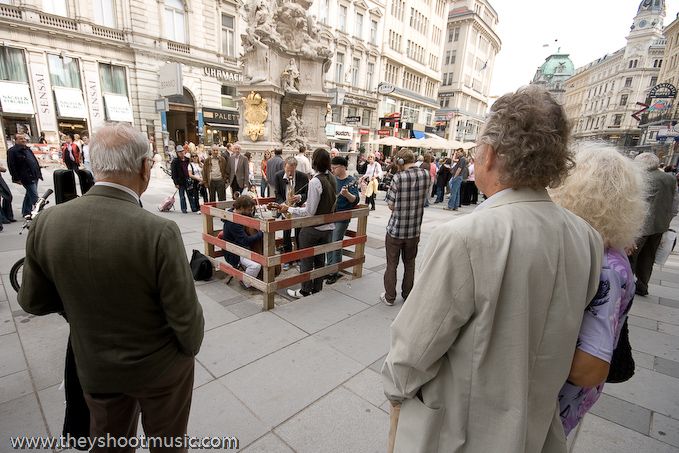
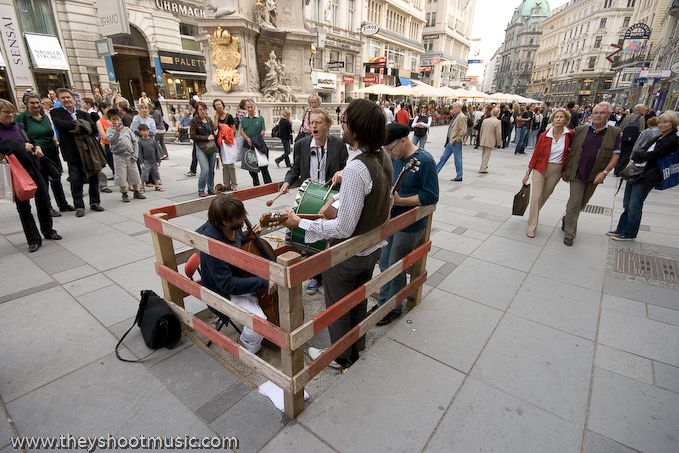
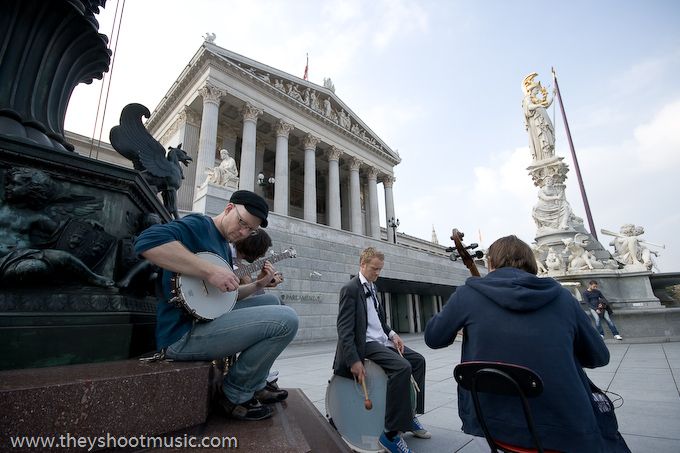

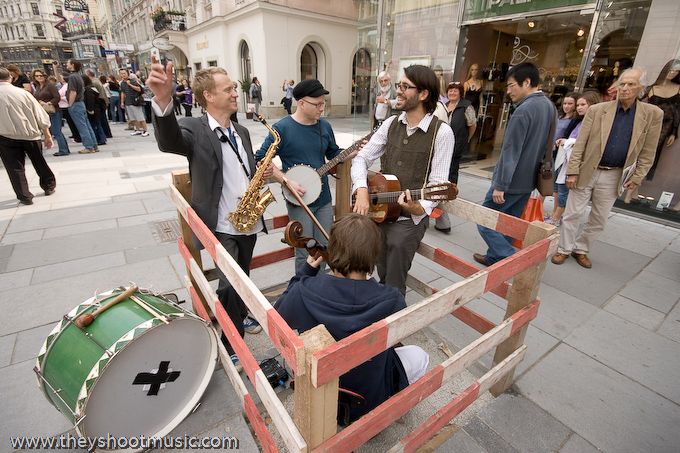
Graben
What was formerly a moat along the old Roman encampment of Vindobona and later bordered the medieval city walls, has over centuries turned into a tout-chic shopping mall. So when tourists and shoppers promenade along one of the most famous streets in Vienna’s first district, they somehow trample on a previous trench („Graben“ in German) that was filled and levelled at the end of the 12th century. Once used as a marketplace Graben was more and more uplifted by construction-work to a chic-address in the Baroque Era. Next to Baroque- and Biedermeier house-facades various representative buildings at Graben – such as Ankerhaus and Grabenhof a.o. by Otto Wagner or Generalihof a.o. by Adolf Loos – date back to the Art Nouveau-period. A historically most notable sculpture on this boulevard is Pestsäule, a golden High Baroque-style column that was erected by Emperor Leopold I. It refers to the Great Plague of Vienna that occured in 1679. In fact most tourists do not come for a special sight to this grand pedestrian street, but more for the overall impression. No wonder as Graben is at the very center of illustrious Vienna leading from the no. 1 sight Stephansdom on Stephansplatz to the junction of Kohlmarkt and Tuchlauben.
Hofburg
Hofburg Palace is today´s seat of the Austrian Federal President and has been the seat of government since 1279 for various empires and republics. The oldest sections of the palace date back to the 13th century, but construction work continued till the early 20th century. This all-embracing building comprises among others a chapel, a treasury, the National Library and the Spanish riding school for Lipizzan horses. Apart from these institutions many adjacent historic buildings and parks invite people to linger in the vast area around Hofburg. So people might approach the palace from the open space at Heldenplatz, the anfractuous path at Burggarten or the Baroque intersection at Michaelerplatz. They might as well see the palace when visiting the Natural History and the Art History Museum or the museum Albertina that is literally attached to Hofburg. Not everyone feels the need to enter the palace, yet pretty much everyone strolls around it now and then.